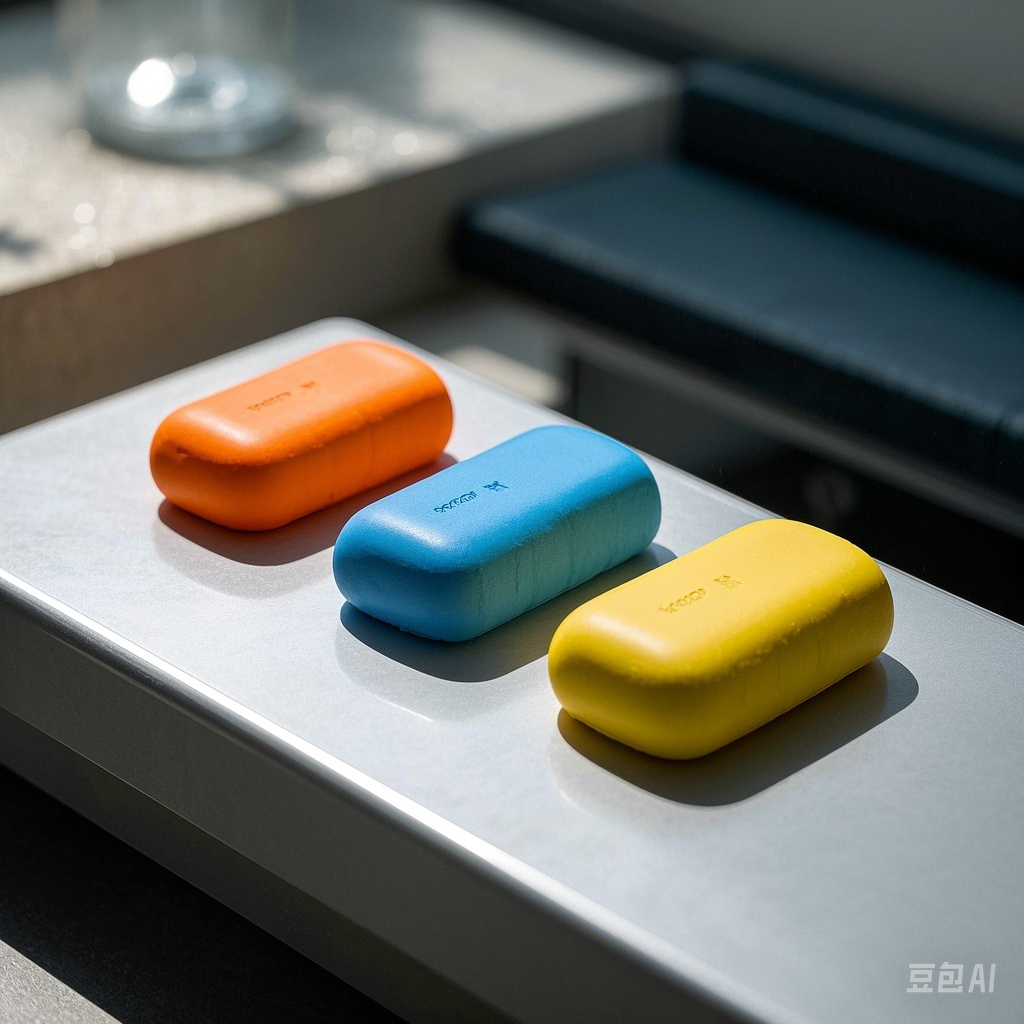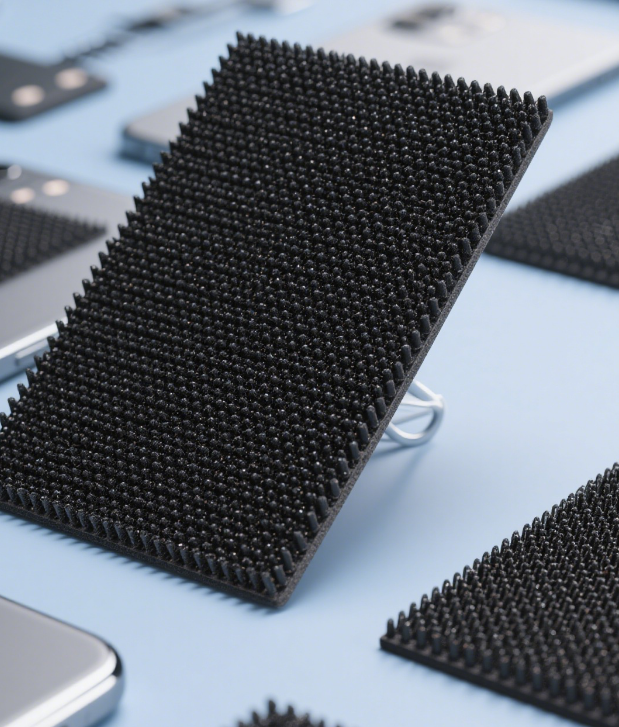The Art of Play: Exploring 5-Minute Curing Two-Component Silicone Clay
Introduction to Silicone Clay
Two-component silicone clay has revolutionized DIY crafting with its unique blend of flexibility, safety, and rapid curing. Unlike traditional clays, this innovative material offers endless creative possibilities, making it perfect for artists, hobbyists, and families alike.
Key Features
- 5-Minute Curing: Fast setting time allows for quick project completion. In a world where we’re often short on time, this rapid curing feature is a game-changer. Whether you’re making a last-minute gift or trying to finish a project for a school assignment, the 5-minute curing time ensures that you don’t have to wait around for hours. For instance, if you’re creating a small figurine for a friend’s birthday, you can shape it and have it fully cured within minutes, ready to be painted and presented.
- Non-Toxic & Safe: Ideal for children, meeting strict safety standards like FDA certification. When it comes to arts and crafts, especially those involving kids, safety is of utmost importance. This silicone clay has been rigorously tested and meets the high safety standards set by the FDA. You can rest assured that your little ones can play and create with it without any risk of harmful chemicals. It’s a great way to encourage their creativity in a safe environment.
- Vibrant Colors: Customizable hues for dynamic creations. The clay comes in a wide range of base colors, and you can even mix them to create your own unique shades. This means that whether you’re making a colorful flower bouquet or a fantasy creature, you can achieve the exact color palette you envision. For example, if you want to make a mermaid with a specific shade of green tail and a purple top, you can blend the available colors to get the perfect match.
- Reusable & Eco-Friendly: Easy to clean and sustainable. Once you’re done with a project, any unused clay can be stored away for future use. It doesn’t dry out like some traditional clays, so you can keep using it over and over again. Additionally, being eco-friendly, it’s a great choice for those who are conscious about the environment. You can enjoy your crafting activities without the guilt of contributing to waste.
Creative Applications for Silicone Clay
1. Basic Shaping & Sculpting
Crafting with this silicone clay is a breeze, even for those new to the world of sculpting. You can easily bring to life a menagerie of animals. For example, fashion a cute little rabbit with long ears and a fluffy tail. The soft and malleable texture of the clay allows you to smoothly form the body, pinch out the ears, and add small details like the nose and eyes with just your fingers. Figurines of superheroes or fairies can also be created, with flowing capes and delicate wings taking shape under your hands. If you’re feeling more abstract, you can let your imagination run wild, creating unique geometric forms or free – flowing shapes that express your inner creativity. The clay responds well to every hand – molding motion, making the process enjoyable and the results satisfying.
2. Mold Making
Making molds with two – component silicone clay opens up a world of possibilities. For jewelry making, you can create a mold of a beautiful seashell – shaped pendant. First, take equal parts of the two components of the clay and knead them together until well – blended. Then, press the clay firmly onto the seashell, making sure to capture all the details. Let it cure for just 5 minutes, and once it’s set, you have a reusable mold. This mold can be used to cast multiple pendants in resin, filled with glitter or small beads for an added touch. You can also make molds for small decorative items like flower – shaped buttons for clothing or toy parts such as the wheels of a miniature car. The durability of the silicone mold ensures that it can be used time and time again, making it a cost – effective and practical solution for crafters.
3. Mixed – Media Projects
Combining silicone clay with other materials adds a whole new dimension to your creations. When working with resin, you can sculpt a silicone base in the shape of a star. After it cures, pour clear resin over the star, and while the resin is still wet, embed colorful beads or sequins around the edges. As the resin dries, it locks in the beads, creating a stunning, sparkly piece that can be used as a keychain or a decorative ornament. In a project involving fabric, you could sculpt a silicone frame and then attach a piece of printed fabric inside it. This could be turned into a unique wall – hanging or a one – of – a – kind handbag accessory. If you’re working with wood, you can sculpt silicone accents like leaves or vines and attach them to a wooden box, transforming it into a beautiful, hand – crafted storage piece.
Step-by-Step Guide to Using Silicone Clay
Preparation
- Mixing Ratio: Combine Component A (the base) and Component B (the catalyst) meticulously in a 1:1 ratio by weight. This precise ratio is crucial for proper curing. Using a small, accurate scale, weigh out equal amounts of each component. For example, if you take 10 grams of Component A, make sure to take exactly 10 grams of Component B. This ensures that the chemical reaction that causes the clay to cure occurs correctly.
- Kneading: Once the components are measured, knead them together thoroughly. The goal is to blend them until the color is completely uniform. You can use your hands, which offer a good sense of touch and control, to knead the clay. Start by folding and squeezing the two components together, then roll and twist them. However, be careful not to overmix. Overmixing can introduce air bubbles and may also cause premature curing, which can affect the quality of your final project.
Curing Process
- Room Temperature: Place the shaped silicone clay at room temperature. It will start to set within just 5 minutes, allowing you to handle it more easily without it losing its shape. But for a full cure, it’s best to let it sit for 24 hours. This slow, natural curing process at room temperature ensures that the clay reaches its maximum strength and flexibility. For instance, if you’ve made a small charm, after 5 minutes you can start adding any additional details like small painted accents, but it’s not fully cured until the 24 – hour mark.
- Speed Curing: If you’re short on time, you can use a heat gun to speed up the curing process. Set the heat gun to a temperature of ≤60°C. Hold the heat gun about 10 – 15 centimeters away from the clay and move it slowly back and forth. This even distribution of heat helps prevent any hot spots that could potentially damage the clay. With this method, the clay can be fully cured in 10 – 15 minutes. However, always monitor the clay closely to ensure it doesn’t overheat.
Finishing Tips
- Surface Smoothing: After the clay has cured, you may notice some rough edges or uneven surfaces. To smooth these out, take a damp cloth and gently rub the surface of the clay. The moisture from the cloth helps to soften the clay slightly, allowing you to smooth out any imperfections. This technique is great for creating a more polished look, whether you’re making a jewelry piece or a small sculpture.
- Painting: To add more detail and color to your creation, you can use acrylic paints or silicone – safe paints. Acrylic paints are widely available and come in a vast range of colors. Before painting, make sure the clay surface is clean and dry. You can use small paintbrushes for fine details or larger brushes for covering larger areas. If you’re using silicone – safe paints, they are specifically formulated to adhere well to the silicone clay and offer long – lasting color. This step allows you to bring your creation to life with vibrant colors and intricate designs.
Why Choose Silicone Clay?

1. Safety & Durability
- Hypoallergenic and non – staining: For those with sensitive skin, the hypoallergenic nature of this silicone clay is a godsend. It won’t cause any skin irritations, making it suitable for everyone to use. Whether you’re a child with delicate skin or an adult with skin sensitivities, you can freely engage in crafting without worry. Moreover, its non – staining property means that it won’t leave any marks on your hands, clothes, or work surfaces. You can let your creativity flow without having to clean up stubborn stains later. For example, if you’re working on a project on a white tablecloth, you don’t have to stress about the clay leaving behind unsightly marks.
- Temperature resistance: With the ability to withstand temperatures ranging from – 40°C to 230°C, your silicone clay creations are built to last. Whether it’s a hot summer day or a cold winter night, the clay won’t crack, melt, or lose its shape. This makes it ideal for outdoor decorations or items that may be exposed to different temperature conditions. For instance, if you make a silicone clay garden ornament, it can stay outside all year round, enduring the heat of summer and the cold of winter without any damage.
2. Educational Benefits
- Stimulating creativity and motor skills: For kids, working with silicone clay is like a fun – filled learning adventure. As they shape the clay into different forms, they are unconsciously enhancing their fine motor skills. Picking up the clay, rolling it into balls, and squeezing it into different shapes all help in developing the small muscles in their hands. This, in turn, improves their hand – eye coordination. Additionally, the process of creating something from scratch encourages them to think creatively. They can come up with their own unique ideas, whether it’s making a new type of animal or a fantasy – themed scene. It also has a connection to STEM learning. When they mix colors, they are learning about basic chemistry. Understanding how the two components of the clay work together to cure is a simple lesson in chemical reactions.
- Teaching patience: The curing process of the silicone clay is a great teacher of patience. Kids have to wait for the 5 – minute initial set and then the full 24 – hour cure. During this time, they learn the value of waiting for a result. It’s a valuable life skill that can be applied in many other areas, such as waiting for plants to grow or for a cake to bake. This patience – building aspect of working with the clay helps in their overall development.
3. Professional – Grade Results
- Ideal for various professional applications: Artists, designers, and hobbyists with more advanced projects in mind will find this silicone clay to be an excellent choice. For prototyping, it allows for quick and easy creation of product models. A jewelry designer can use it to create a prototype of a new necklace pendant, testing the shape and design before moving on to more expensive materials. In the world of cosplay, enthusiasts can make highly detailed props. For example, they can create a replica of a famous superhero’s mask with all the intricate details, thanks to the clay’s malleability and ability to hold fine shapes. Art installations can also benefit from the use of silicone clay, as it can be used to create large – scale, durable art pieces.
- High tensile strength: One of the remarkable properties of this silicone clay is its high tensile strength. Once cured, it can withstand a significant amount of stress without cracking or deforming. This means that your creations, whether they are small figurines or large – scale sculptures, will maintain their integrity over time. If you make a large, complex art piece, you don’t have to worry about it falling apart or losing its shape due to its own weight or minor impacts. It provides a level of durability that is often hard to achieve with other types of clays.
Safety & Storage Tips
- Keep Sealed: Store unused components in airtight containers. Oxygen and moisture in the air can cause the clay to harden prematurely. For example, if you have some leftover clay after a project, place it in a tightly – sealed plastic container or a ziplock bag. This way, you can ensure that it remains in a usable state for your next creative endeavor.
- Avoid Contamination: Use separate tools for different colors. If you use the same tool for multiple colors without cleaning it thoroughly, it can lead to color contamination. For instance, if you use a sculpting tool with red clay and then immediately use it with white clay without cleaning, the white clay may pick up some red tint, ruining the intended color.
- Ventilation: Work in a well – ventilated area during mixing. Although the silicone clay is non – toxic, the mixing process may release some minor odors. A well – ventilated space, such as a room with an open window or an area near a fan, helps to dissipate these odors quickly, making the crafting experience more pleasant.
Conclusion
Two-component silicone clay bridges fun and functionality, empowering creators of all ages to bring ideas to life. Whether you’re crafting a personalized gift or exploring advanced sculpting techniques, its quick cure time and versatility make it a must-have in any DIY toolkit.
















